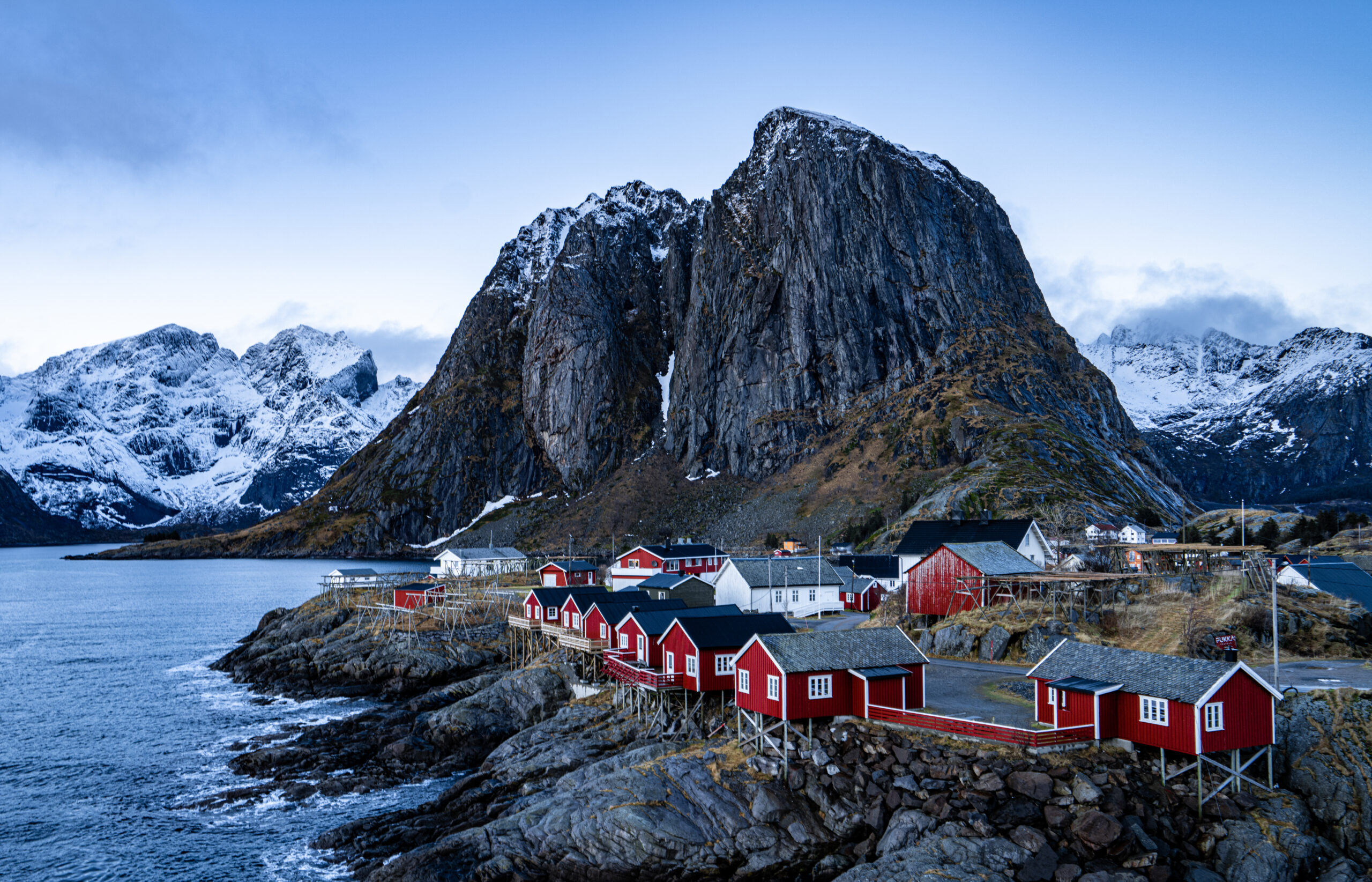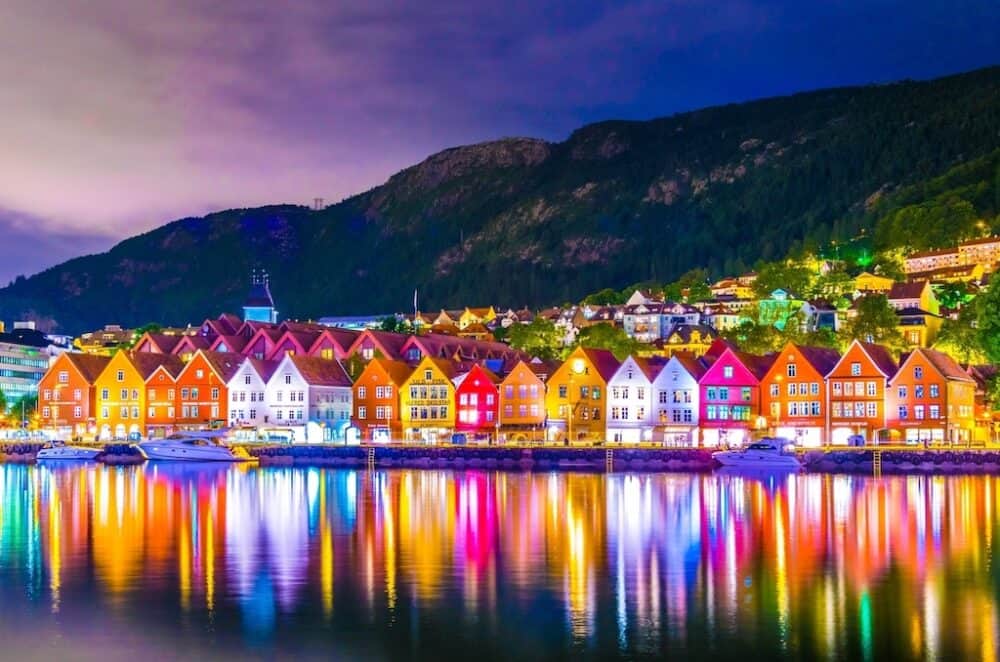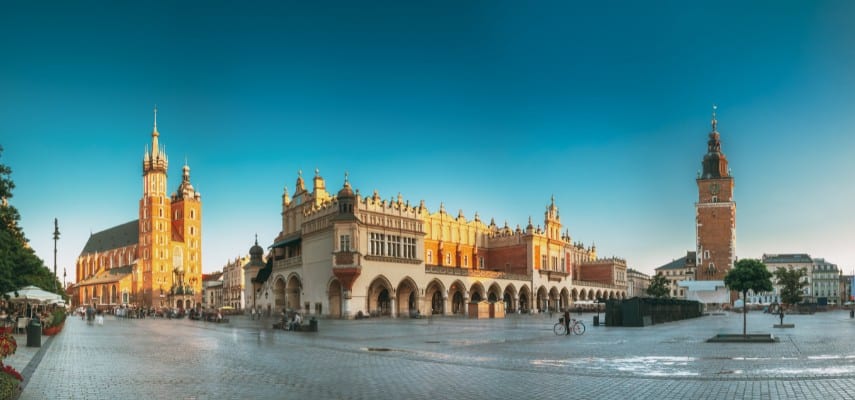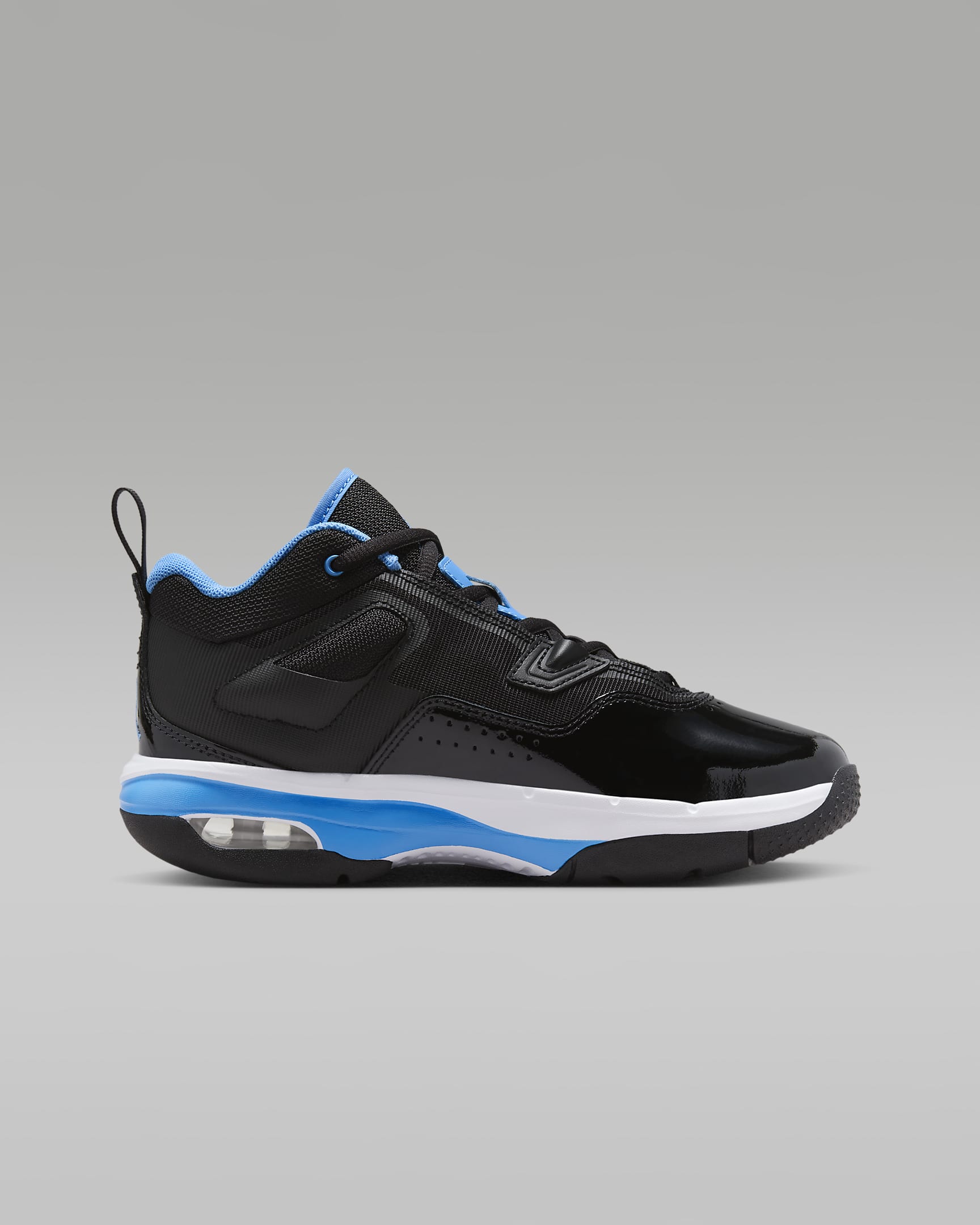
Norway, a land sculpted by ancient glaciers and kissed by the Arctic sun, stands as an undisputed jewel in Europe’s crown. From its dramatic fjords plunging into turquoise waters to vibrant, modern cities nestled amidst breathtaking natural beauty, and the ethereal dance of the Northern Lights, Norway offers an unparalleled tapestry of experiences. Planning a trip to this Scandinavian marvel requires a blend of practical knowledge and an adventurous spirit. This comprehensive guide will equip you with everything you need to embark on an unforgettable Norwegian journey, covering how to get there, its rich history, top attractions, travel tips, accommodation, transportation, and the best time to visit.
How to Travel to Norway: Gateway to the North
Reaching Norway is surprisingly straightforward, thanks to its well-connected infrastructure.

Related Articles about Journey to the Land of Fjords: An Ultimate Guide to Traveling Norway:
- Tokyo: A Symphony of Tradition and Tomorrow – Your Essential Guide to the City’s Top Attractions
- The Ultimate Guide to Exploring the United States: From Coast to Coast
- Unveiling Vietnam: A Comprehensive Guide to Your Southeast Asian Adventure
- Beyond the Beer: A Comprehensive Guide to Experiencing the Czech Republic
- Jakarta: A Traveler’s Guide to the Bustling Capital of Indonesia
By Air: The most common way to arrive is by plane. Oslo Gardermoen Airport (OSL) is the largest international hub, offering direct flights from major cities across Europe, North America, and Asia. Other key international airports include Bergen Flesland (BGO), Trondheim Værnes (TRD), and Tromsø Langnes (TOS), especially convenient for those heading directly to the fjords or the Arctic north. Major airlines like SAS, Norwegian Air Shuttle, Widerøe (for domestic connections), Lufthansa, British Airways, and KLM serve these routes.
By Sea: For a more scenic approach, consider a ferry from neighboring countries. Color Line and Fjord Line operate routes from Denmark (Copenhagen, Hirtshals) and Germany (Kiel) to various Norwegian ports like Oslo, Kristiansand, and Bergen. These overnight journeys offer comfortable cabins, onboard amenities, and stunning coastal views as you approach Norway.
By Land: While less common for international arrivals, it’s possible to enter Norway by train or bus from Sweden. The Oslo-Stockholm train line is a popular option, as are bus services connecting various Swedish cities to Norwegian counterparts. Driving from Sweden or Finland is also an option, offering flexibility for a road trip, but be mindful of border crossings and varying road conditions, especially in winter.
Visa Requirements: Norway is part of the Schengen Area. Citizens of many countries, including the US, Canada, Australia, and most of Europe, can enter without a visa for stays up to 90 days within a 180-day period. Always check the specific visa requirements for your nationality well in advance of your trip.
A Glimpse into Norway’s History: From Vikings to Oil Riches
Norway’s history is as rugged and captivating as its landscapes. Its story is one of fierce independence, maritime prowess, and a remarkable transformation.
The Viking Age (8th-11th centuries) is arguably the most defining period. Norwegian Vikings were renowned explorers, traders, and raiders, venturing across the North Atlantic to Iceland, Greenland, and even North America (Vinland). Their longships, sagas, and intricate artistry left an indelible mark on global history and continue to fascinate visitors today. Vestiges of this era can be found in archaeological sites and museums, showcasing the ingenuity and spirit of these legendary seafarers.
Following the Viking Age, Norway entered a period of unions with its Scandinavian neighbors. It was part of a union with Denmark for over 400 years (1397-1814) and then with Sweden until 1905, when it finally gained full independence. This struggle for national identity shaped its unique cultural and political landscape.
The 20th century brought significant changes, including the devastating impact of World War II, during which Norway was occupied by Nazi Germany. The post-war era saw rapid industrialization, and the discovery of vast oil and natural gas reserves in the North Sea in the late 1960s transformed Norway into one of the wealthiest nations in the world. This wealth has been managed through a sovereign wealth fund, allowing Norway to invest in its future and maintain a high standard of living.

Today, Norway proudly preserves its heritage, from ancient stave churches (unique wooden medieval churches) to the vibrant culture of the Sami people, the indigenous inhabitants of the Arctic regions of Norway, Sweden, Finland, and Russia. Understanding this historical backdrop enriches the experience of exploring Norway’s cities, rural areas, and artistic expressions.
Top Attractions: Nature’s Masterpiece and Urban Charms
Norway’s allure lies primarily in its dramatic natural beauty, but its cities also offer a rich blend of culture, history, and modern Nordic design.
The Fjords: These deep, narrow inlets carved by glaciers are Norway’s signature attraction. The Geirangerfjord and Nærøyfjord are UNESCO World Heritage sites, renowned for their steep cliffs, cascading waterfalls (like the Seven Sisters and the Bridal Veil), and emerald waters. Accessible by ferry, cruise, or scenic drives, they offer unparalleled photographic opportunities. Adventurous hikers can tackle iconic trails to Pulpit Rock (Preikestolen), Trolltunga, and Kjeragbolten for vertigo-inducing views.
Oslo: The capital city is a dynamic blend of modern architecture and green spaces. Don’t miss the Vigeland Park, an outdoor sculpture park featuring over 200 bronze and granite works by Gustav Vigeland. The Munch Museum houses the world’s largest collection of Edvard Munch’s works, including several versions of "The Scream." The National Museum (opened 2022) offers a comprehensive collection of Norwegian art and design. Other highlights include the stunning Oslo Opera House, the historic Akershus Fortress, and the lively Aker Brygge waterfront district.
Bergen: Known as the "Gateway to the Fjords," Bergen is Norway’s second-largest city and a UNESCO World Heritage site. Its colorful Bryggen Wharf, with its historic wooden Hanseatic buildings, is instantly recognizable. Ride the Fløibanen funicular for panoramic city views, explore the bustling Fish Market, and immerse yourself in the city’s vibrant arts scene.
Tromsø: Located deep within the Arctic Circle, Tromsø is often called the "Gateway to the Arctic." It’s one of the best places in the world to witness the Northern Lights (Aurora Borealis) from September to March. During summer, it basks in the glow of the Midnight Sun. Visit the striking Arctic Cathedral, learn about polar exploration at Polaria, and take the Fjellheisen cable car for breathtaking views. Tromsø is also a hub for whale watching and dog sledding tours.
Lofoten Islands: A postcard-perfect archipelago, Lofoten boasts dramatic mountains, sheltered bays with pristine beaches, and picturesque fishing villages with traditional rorbuer (fishermen’s cabins). It’s a paradise for hiking, kayaking, surfing, and photography, and another prime spot for the Northern Lights.
Trondheim: A historic city in central Norway, Trondheim is home to the magnificent Nidaros Cathedral, Norway’s national sanctuary and a masterpiece of Gothic architecture. Explore the charming Gamle Bybro (Old Town Bridge) and the colorful wooden houses along the Nidelva River.
Stavanger: Gateway to Pulpit Rock, Stavanger offers a charming old town (Gamle Stavanger) with beautifully preserved wooden houses and an engaging Norwegian Petroleum Museum detailing the country’s oil history.
Atlantic Ocean Road: Voted the "world’s best road trip," this spectacular stretch of highway winds across several small islands and skerries, connected by bridges that seemingly leap across the ocean.
Stave Churches: Scattered across rural Norway, these unique wooden churches from the Middle Ages are architectural marvels. The Urnes Stave Church (UNESCO) and the Borgund Stave Church are particularly well-preserved examples.
Best Time to Visit: Chasing Light or Snow?
Norway’s distinct seasons offer vastly different experiences, making the "best" time to visit dependent on your interests.
Summer (June – August): This is peak season, and for good reason. The days are long (with the Midnight Sun in the north), temperatures are mild, and all attractions, hiking trails, and roads are accessible. It’s ideal for fjord cruises, hiking, cycling, and city sightseeing. However, it’s also the most crowded and expensive time to travel.
Autumn (September – October): A beautiful shoulder season, autumn brings fewer crowds, stunning fall foliage, and cooler, crisp air. Early autumn is still excellent for hiking. The Northern Lights begin to appear in the Arctic regions as the nights grow longer.
Winter (November – March): Norway transforms into a winter wonderland. This is the prime time for Northern Lights hunting, skiing (alpine and cross-country), dog sledding, and experiencing a truly magical, snow-covered landscape. Days are short, especially in the north, and some remote roads and attractions may be closed. Dress warmly!
Spring (April – May): Another shoulder season, spring sees melting snow feeding powerful waterfalls, blossoming flowers, and gradually lengthening days. Crowds are fewer than in summer, and prices can be lower. You might still catch the Northern Lights in early spring, and it’s a great time for scenic drives as roads reopen.
Getting Around Norway: Navigating the Landscape
Norway’s geography, with its extensive coastline and mountainous terrain, makes internal travel an adventure in itself.
Flights: For covering long distances quickly (e.g., Oslo to Tromsø or Lofoten), domestic flights are essential. Airlines like Widerøe, SAS, and Norwegian operate a comprehensive network connecting even smaller towns.
Trains: Norway’s train network, operated by Vy, is limited but incredibly scenic. The Oslo-Bergen Railway is one of the world’s most beautiful train journeys, passing through mountains, fjords, and charming villages. The Flåm Railway, a steep branch line, is another iconic route. Trains are comfortable and efficient, but routes mainly cover the southern and central parts of the country.
Buses: An extensive and reliable bus network connects towns and cities not served by trains. Long-distance buses are often a more affordable option and can take you to remote areas. Local buses are excellent for urban exploration.
Ferries and Express Boats: Given Norway’s coastline and fjords, ferries are an integral part of the transportation system. They are crucial for crossing fjords, island hopping, and experiencing the coastal landscape. The iconic Hurtigruten coastal voyage offers a leisurely journey from Bergen to Kirkenes (and back), stopping at numerous ports along the way, serving as both a cruise and a vital local transport link.
Car Rental: Renting a car offers the ultimate flexibility, especially if you plan to explore scenic drives like the Atlantic Ocean Road or Trollstigen, or delve deep into the fjords and Lofoten Islands. Be prepared for tolls (often automated, billed to the rental company), narrow roads, and challenging winter conditions (snow tires are mandatory). Electric car charging infrastructure is excellent.
Bicycles: Cycling is popular in Norway, with many dedicated paths and routes. You can rent bikes in most cities and tourist areas.
Accommodation Options: From Historic Cabins to Luxury Hotels
Norway offers a diverse range of accommodations to suit all budgets and preferences, often with stunning views.
Hotels: You’ll find international chains (Scandic, Thon, Clarion) alongside charming boutique hotels in cities and towns. Options range from budget-friendly to high-end luxury.
Rorbuer: These traditional fishermen’s cabins, particularly prevalent in the Lofoten Islands and along the coast, offer an authentic and often self-catering experience. Many have been beautifully renovated with modern amenities.
Hytter (Cabins): Throughout the countryside and near hiking trails, you’ll find hytter – self-catering cabins of varying sizes and comforts. They are perfect for families, groups, or those seeking a rustic nature retreat.
Camping: Norway has numerous well-equipped campsites, many offering additional cabins for rent. Thanks to "Allemannsretten" (the Right to Roam), you can also wild camp responsibly in uncultivated land, provided you stay at least 150 meters from inhabited houses and leave no trace.
Youth Hostels (Vandrerhjem): Offering affordable dorms and private rooms, hostels are a great option for budget travelers and those looking to meet other adventurers. Many are situated in scenic locations.
Guesthouses and B&Bs: For a more personal touch, consider staying in smaller guesthouses or bed and breakfasts, often run by local families.
Farm Stays: For a unique cultural experience, some farms offer accommodation, allowing guests to experience rural Norwegian life.
Practical Travel Tips: Navigating the Norwegian Way
To ensure a smooth and enjoyable trip, keep these practical tips in mind:
- Cost of Living: Norway is famously expensive. Budget accordingly. To save money, consider self-catering (grocery stores are plentiful), packing snacks, using public transport, and booking accommodations in advance. Alcohol is particularly pricey and has restricted sales (only available in state-run Vinmonopolet stores).
- Currency: The Norwegian Krone (NOK). Credit cards are widely accepted everywhere, even for small purchases. Carrying a small amount of cash can be useful for very remote areas or small markets, but it’s rarely essential.
- Language: Norwegian is the official language. However, English is almost universally spoken, especially in tourist areas, hotels, and restaurants, so communication is rarely an issue.
- Tipping: Tipping is not mandatory in Norway, as service charges are usually included. For exceptional service, rounding up the bill or leaving a small amount is appreciated but not expected.
- Weather: Be prepared for all types of weather, even in summer. Layered clothing is key. A waterproof and windproof jacket, sturdy hiking shoes, and warm layers are essential, regardless of the season.
- Safety: Norway is one of the safest countries in the world, with very low crime rates.
- Sustainability: Norwegians are deeply connected to nature. Practice responsible tourism by respecting the environment, following marked trails, disposing of waste properly, and minimizing your impact ("leave no trace").
- Booking in Advance: Especially during peak season (summer and winter holidays), book flights, accommodations, and popular tours (like fjord cruises or Northern Lights excursions) well in advance to secure your spot and often better prices.
- Drinking Water: Tap water in Norway is safe, clean, and delicious. Bring a reusable water bottle.
- Allemannsretten (Right to Roam): This unique law grants public access to uncultivated land. You can hike, cycle, ski, and camp almost anywhere, provided you respect private property, leave no trace, and don’t disturb nature or wildlife.
Conclusion: Your Norwegian Adventure Awaits
Norway is more than just a destination; it’s an experience that etches itself onto your memory. Whether you’re chasing the celestial ballet of the Northern Lights, cruising through mirror-smooth fjords, hiking to exhilarating viewpoints, or exploring vibrant cities rich in history and culture, this Scandinavian gem promises an adventure like no other. With careful planning and an open heart, you’re ready to discover the unparalleled beauty and unique spirit of the Land of the Fjords. Pack your bags, prepare for breathtaking vistas, and embark on a journey to Norway – a journey that will undoubtedly leave you longing to return.





